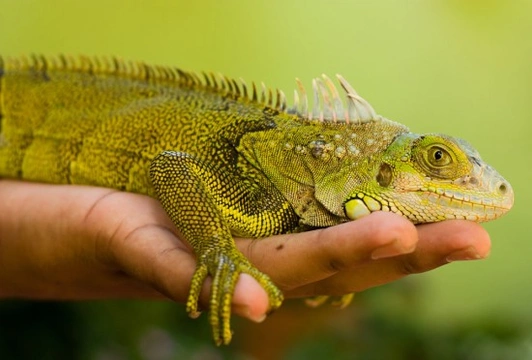
Why Keep a Reptile?
Many of you may wonder why on earth anyone would like to keep a reptile as a pet rather than something fluffy and soft. For those who are reptile lovers they may find it difficult to understand the attraction of a smelly dog, a demanding cat or a pesky parrot. And then there are the lucky remainder who love both furry and dry skinned pets. Fortunately there is a pet for everyone, whatever their requirements, and for those who suffer allergies to fur or feathers reptiles are the ideal pet. Another advantage to owning a reptile is the fact that they are smell free if maintained correctly and it this aspect that may appeal to the house proud owner who doesn’t want the mess and dirt associated with dogs or the shedding hair from a cat. There are so many exotic pets to choose from: lizards, frogs, millipedes, geckoes, snakes, to name just a few. And then there are the arachnids, or spiders; turtles, terrapins and tortoise. The list is endless and they all go under the title ‘Exotic Pets’ but for the purpose of this article we will stick with lizards, frogs and snakes.Some reptiles, such as the tree frog, are easy to care for as long as their environment is the correct one for them. There are many different species of tree frog but generally they are very sociable and like to live in groups so you shouldn’t buy just one. It is detail like this that is very important when choosing a reptile, or any pet for that matter, as you must ensure you are able to provide everything it needs. If you don’t do your homework thoroughly you can also be surprised by a large bill when purchasing the necessary environment for your pet. It is a sad but true fact that many animals cost a lot less than the equipment and food needed to meet their requirements and you would be very negligent indeed if you bought a pet without checking out all that goes with it. When considering the housing for your reptile remember to consider what, if anything, there should be inside the enclosure or vivarium. Tree frogs need a vivarium that is correctly sized to the number of frogs you intend to keep as well as containing something to climb on inside their home. A snake’s requirements would be vastly different as a species and then different again for each type of snake. For example corn snakes prefer to live alone and need a vivarium of the correct size as young corn snakes in particular suffer from stress if their vivarium is too big. Snakes are also notorious escape artists so you must ensure that the tank or vivarium is escape proof. A snake can squeeze through the tiniest of gaps and one of the most adept at this is the ball python. Corn snakes can become quite tame with handling and do not tend to be aggressive whereas a carpet python may be much more difficult. Carpet python’s can live for over twenty years so they are a big commitment and this must be thought about very carefully before purchasing one. Another thing to consider before purchasing a reptile as a pet is its diet. There are some that only eat vegetable matter but most are carnivorous or omnivorous and in the case of snakes you are going to have to get toughened up as you will be feeding live or frozen prey to them. Snakes are notoriously difficult feeders and can have all sorts of problems surrounding their diet. For example some snakes will regurgitate their food if they are handled just after feeding and many snakes are extremely reluctant feeders which results in poor condition and exposure to illness. You may have wanted a pet that will amuse and entertain you. Well unfortunately most reptiles are crepuscular or nocturnal. If they are crepuscular they will be most active at dawn and dusk whereas if they are nocturnal they will be mostly active once the vivarium and room lights have been turned off. But don’t worry - there are night lighting systems available so that you can still watch your pet as it goes about its business in the darkness of night! Some reptiles are particularly good for a child’s pet and generally snakes are better for children as they don’t require as much care as lizards but even so they are not easy. The best types of snakes for children are corn snakes, king snakes, and captive bred ball pythons. Amongst the lizards choose leopard geckos or bearded dragons or maybe even a skink, the berber/schneider and blue-tongue skink being the most appropriate.Unsuitable snakes for children are the Burmese, Reticulated and African Rock Pythons. They are all cute when young but grow into absolutely huge adults and although the Burmese Python can become tame the other two seldom do. Amongst the lizards Green Iguanas are not recommended for children and it should always be remembered that any reptile may be a carrier of salmonella so hand hygiene is especially important after handling your pet. There is an official body in the UK that represents reptiles, the British Federation of Herpetologists, and they estimate that there are around eight million reptiles and amphibians being kept as pets in the UK. There are only six and a half million dogs and nine million cats so it is clear to see just how popular exotic pets have become. The BFH also believe that reptiles and amphibians are more suitable as pets than cats or dogs as they fit more easily into the modern lifestyle being less time consuming and easier to keep than traditional pets. However that does not mean that your reptile can be left to fend for itself. Finally it should also be noted that there are some reptiles that are not allowed to be kept by law. If in doubt check with DEFRA.



